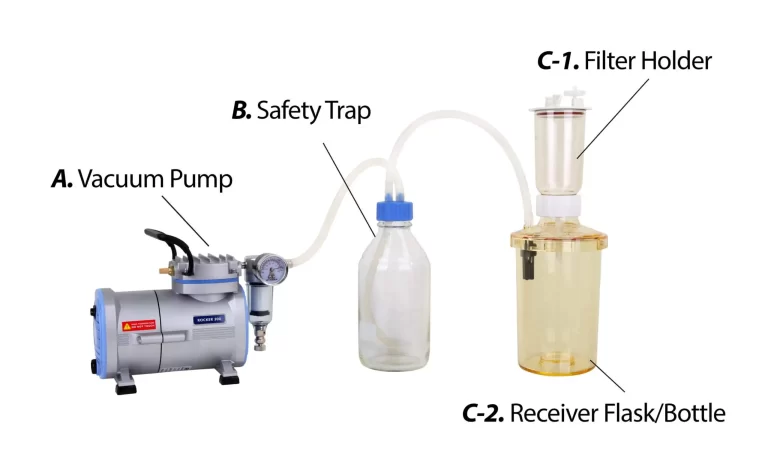Vacuum filtration is a vital technique used in laboratories and industrial processes for the separation and filtration of solids from liquids through the application of reduced pressure. This topic holds significant importance due to its wide range of applications in various fields, including chemistry, biology, and environmental analysis. Vacuum filtration allows for efficient particle removal, clarification of solutions, and isolation of precipitates or solid residues.
By discussing vacuum filtration, we gain insights into its principles, methodologies, and advancements, which contribute to improved sample purification, separation of mixtures, and removal of impurities. Exploring the topic of vacuum filtration is crucial for researchers, scientists, and technicians seeking reliable and efficient methods for liquid-solid separation and sample preparation in their respective fields.
Filtration aims to hinder suspended particles in a liquid using membrane filters or porous materials, thereby separating solid and liquid substances in a heterogeneous mixtureto achieve separation and clarification. There are three commonly used laboratory filtration methods: gravity filtration, vacuum filtration, and pressure filtration. The appropriate filtration method should be selected based on the characteristics of the sample to be filtered, the desired efficiency in removing suspended particles, and the time required for filtration.
Vacuum filtration setup often includes vacuum pump, safety trap, filter holder and receiver flask.

The vacuum pump utilized in vacuum filtration is responsible for extracting gas molecules from a designated space, typically a laboratory flask or bottle, in order to achieve a desired pressure difference and facilitate the filtration process. In general, a pump with a vacuum of 685 mmHg is suitable for most filtration experiments, as this value represents a pressure difference of 90%. Only a small number of experiments may necessitate pumps with higher vacuum capabilities. (Note: 1 atmosphere is equivalent to 760 mmHg.)
Select the type of pump based on the nature of the sample, whether it is a general water solution, organic solvent, or corrosive substance. Watch and learn how to choose the right pump for your laboratory.
When selecting the appropriate vacuum, consider the characteristics of the sample, such as the presence of suspended particles and the viscosity of the liquid. Generally, samples with higher viscosity or more impurities require a higher vacuum level to achieve satisfactory results. If you encounter difficulties with vacuum conversion, learn how to perform correct vacuum conversion to ensure accurate measurements.
Choose a suitable pump flow capacity based on the volume of the filter bottle. The larger the filter bottle, the higher the required flow rate should be.
Reasons to choose Rocker Oil-free Vacuum Pumps rather than general water pumps:
A safety trap is typically installed between the pump and the receiver bottle in a vacuum filtration system. Its purpose is to prevent the filtrate from flowing back into the pump as a result of improper operation, which could potentially damage the pump. In a laboratory filtration system, a safety trap can be a GL45 glass storage bottle, a vacuum bottle, or a waste bottle.
Filter holders are used to secure filter membranes and facilitate the passage of liquid through the membrane during filtration. They can be attached to the top of receiver bottles using either silicone stoppers or a spin lock mechanism.
Receiver flasks, also referred to as suction flasks or waste flasks, serve as the containers that are connected to the vacuum pump to collect the filtrate during the filtration process. These flasks are sometimes connected to a safety trap using silicone tubes.
This article was originally published by our partners Rocker Scientific. View the original article here
Literature Reference
| Literature | Author | Method applied |
| Cryopreservation of the gorgonian endosymbiont Symbiodinium | Gabriella Chong et al. | Seawater filtration (filtered seawater (FSW) preparation) |
| First instance of settlement by cryopreserved coral larvae in symbiotic association with dinoflagellates | Luca Cirino et al. | Seawater filtration (filtered seawater (FSW) preparation) |
| Detection and characterization of small-sized microplastics (≥ 5 µm) in milk products | Paulo A. Da Costa Filho et al. | Milk sample filtration |
| Solvent polarity mediates phytochemical yield and antioxidant capacity of Isatis tinctoria | Abdul Wakeel et al. | Vacuum drying |
Reference:
Fill in the form and our team of experts will recommend the best viscometer and setup based on your requirements.